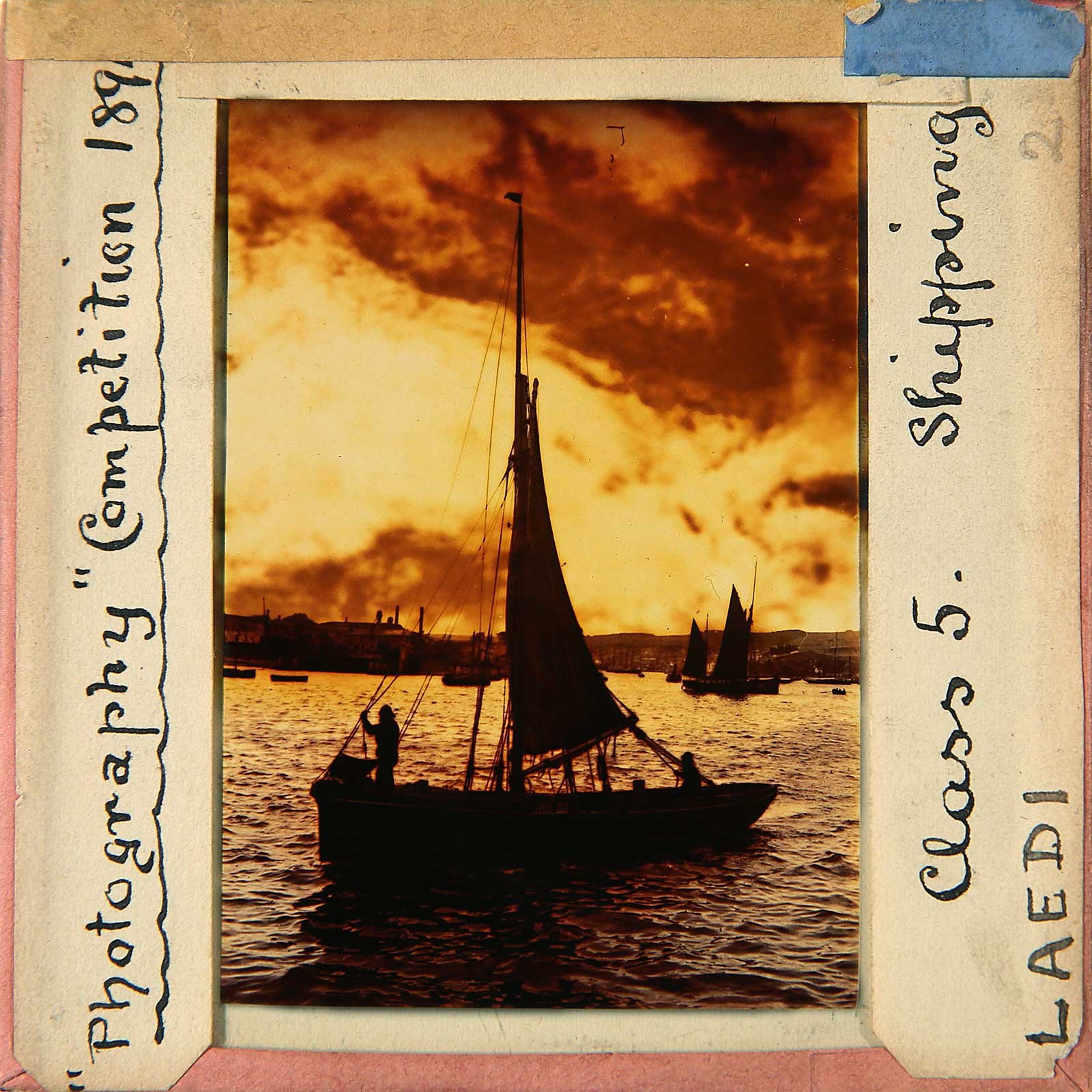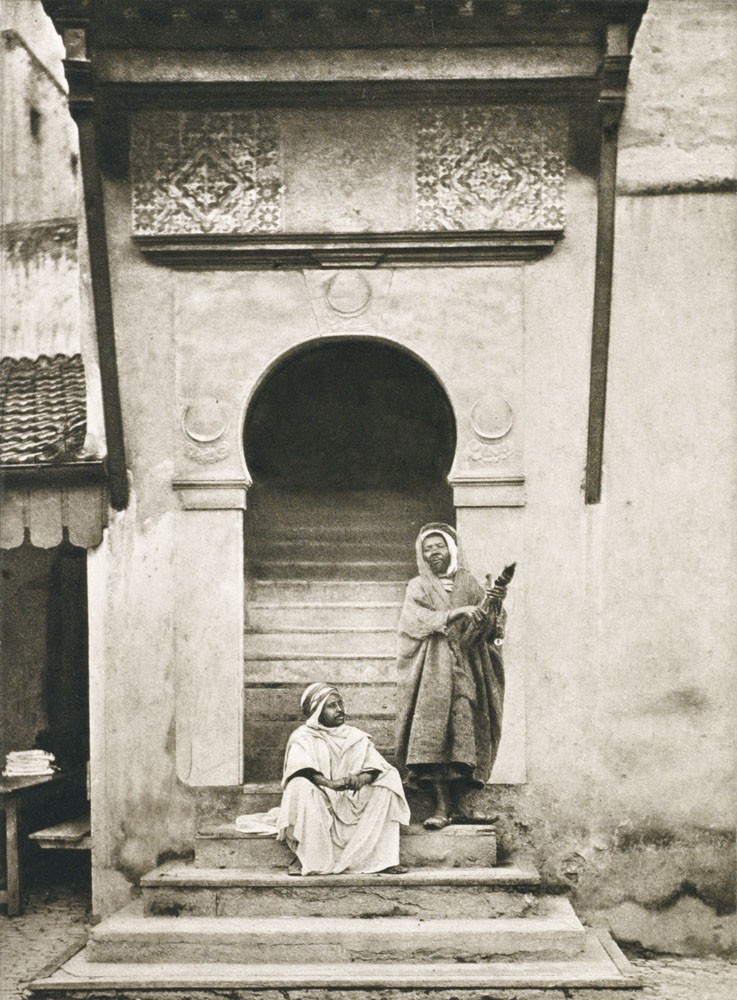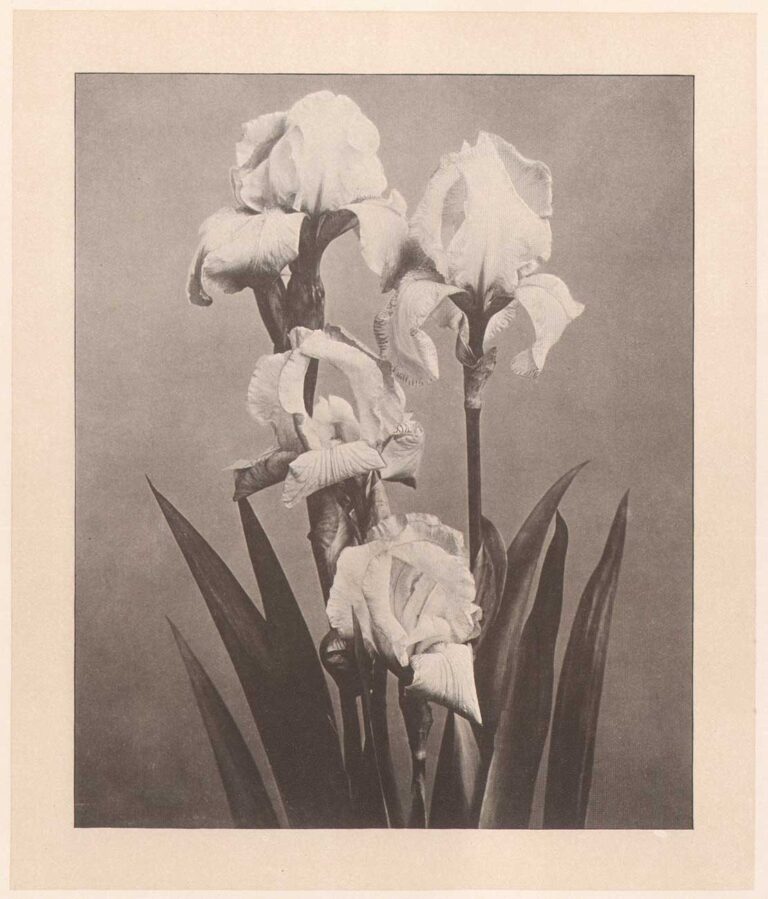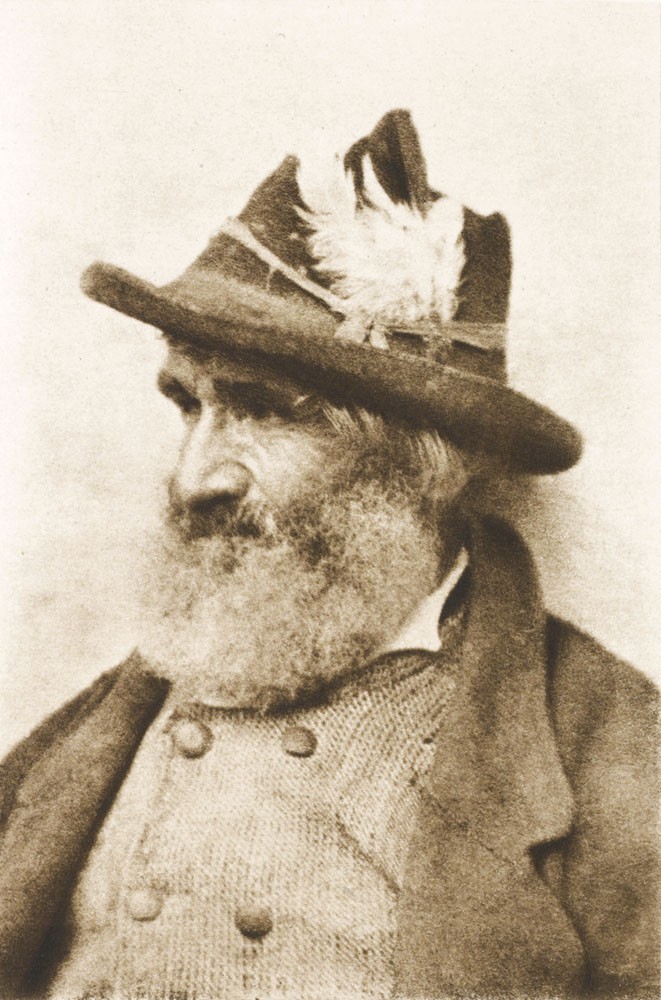
Photography Competition 1894: Shipping
This rare hand-toned exhibition lantern slide showing a sailboat-possibly on the River Tyne in England-was taken by an unknown English photographer using the nom de plume LAEDI and entered in the Sixth Annual Lantern Slide Competition of 1894. The contest was made up of 14 individual classes sponsored by the the London journal Photography. (The Journal of The Amateur, The Profession & The Trade)
Written on the slide are the following details:
“Photography” Competition 189 (4-covered)
Class 5. Shipping
LAEDI (nom de plume to shield identity of photographer)
2 (drawn in graphite-possibly signifying second place?-editor)
In 1894, Photography wrote about the popularity of their annual lantern slide competition:
OUR ANNUAL SLIDE COMPETITION
Our readers every year look out for this competition with
some expectation, and we have for some time past been
receiving applications for the loan of the slides. Photography,
besides growing in general interest, is becoming more and more
a handmaiden to knowledge, and an admirable servant for the
dissemination of it. In many ways formerly unthought of it
is doing good work, and with subjects which might at first
glance be deemed quite unsuitable for illustration by it. But
it is getting more and more clear that there is no branch of
learning in which instruction may not be given by the aid of
the optical lantern and photography. Even the summer
course of the University Extension movement at Oxford has
furnished an example of what we state.
It has been frequently pointed out that what is worth doing
in photography is worth doing well, and it is good to enforce
the doctrine of purpose in such a connection. This competition
that we are now arranging is one which we hope will be taken
up in this spirit. We want the work to be purposeful and
serious. Good work will not come out of haphazard methods,
yet it may come about that an occasional negative will be just
what was wanted—though this may have been secured “more
by hap than cunning.” (1.)
Of the 14 individual classes for the contest, the following are the requirements to enter slides in Class 5, which this toned example showing a sailboat at dawn or dusk was entered in:
“Shipping” and “The sea shore,” Class 5, ought to bring many competitors. We suggest that the two subjects “Shipping” and “The sea shore” should not be mixed. The former may be treated in any aspect, and fewer subject is meant to include all the operations and sights which may be found in connection with the shore, and the shore itself, in contradistinction to sea craft in the form of ships and the like. (2.)
And the awards for Class 5 announced the following year in the issue of Photography for November 15th, 1894 on p. 733:
“Bell,” Harry Wade, Stockton Road, Chorlton-cum-Hardy, Manchester. Silver medal.
“Ozone,” Edgar G. Lee, Cullercoats, Newcastle-on-Tyne. Bronze medal.
“Bamboo,” Alfred Nicholson, 38, Victoria Street, Glossop Road, Sheffield. Certificate.
“Pennant,” Jno (?) Stable, 154, Queen’s Road, Bayswater. Certificate.
Wikipedia: Seaside air was considered to be healthy because of its believed ozone content; but the smell giving rise to this belief is in fact that of halogenated seaweed metabolites. (retrieved March, 2017)
An interesting editorial observation on coloring lantern slides also appeared in the journal the following year in 1895:
Toning Lantern Slides
Colouring lantern slides by a so-called toning process appears to have had the attention of more than one worker. This is natural enough, and it is equally natural that, if they had not had their work brought before the world, their share in what had been done could not have been as fully known as it deserved to be. Our notice of what Mr. A. Alexandre has done has brought us a couple of letters, one from Mr. G. F. Blower, of Ramsgate, and the other from Mr. A. Brooker, of Hastings. The former sends us examples of his work done, six years ago, and it is very interesting indeed and very successful as a departure from colouring with pigments. Mr. Brooker speaks for himself in the letter we print, but we have not yet seen examples of his work. There have been other experimenters, we know, and we shall be glad to have for our readers any further information on what is an exceedingly interesting subject for photographers. (3.)
Newcastle photographer Edgar G. Lee (1860 -1915) may have been responsible for this marine view as it was acquired with several other lantern slides done by him by this archive. One other known example contains a similar pink paper slide border marked Lee. The photographer was known to be one of the most active and finest in exhibiting lantern slides as early as 1890.
1. excerpt: “Our Annual Slide Competition” in: Photography: The Journal of The Amateur, The Profession & The Trade: London: editor: Henry Sturmey: August 16, 1894: p. 525
2. Ibid; p. 525
3. from: “Spirit of the Times” in: Photography: The Journal of The Amateur, The Profession & The Trade: London: editor: Henry Sturmey: November 7, 1895:p. 708



